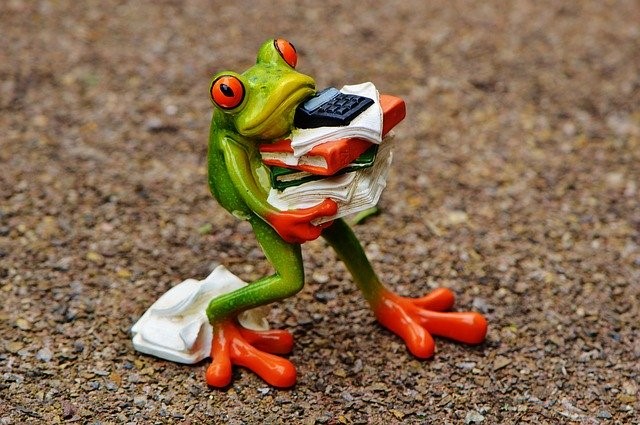
You’ve heard it a million times: Stress is bad for you. It hurts your performance. So you need to reduce stress.
But what if that’s all wrong? What if the real story of stress is a lot more interesting than that?
And I don’t know about you, but when I hear the advice to “reduce stress,” I tend to roll my eyes. For most of us, that’s just not realistic.
So I’d like to give you some better ways to understand stress and some tools you can use. I have two major things to offer you today:
- How to actually benefit from acute stress, using it improve your performance.
- How to manage and recover from chronic stress in order to minimize or eliminate its negative effects.
If you adopt these strategies and mindsets, you will become happier, healthier, and more effective.
Part 1: Acute Stress
Let me tell you the story of one of the craziest things that ever happened to me.
One sunny summer day about seven years ago, my father and I set out to climb Guye Peak, which is a short, steep hike in the Cascades. About halfway up, the trail splits, and you can go to Guye Peak or Mt. Snoqualmie. We decide to stop at this fork in the trail for a rest.
And as we’re sitting in the sun, enjoying the view, a man comes running down the Mt. Snoqualmie trail in a panic!
He rushes up to us and breathlessly exclaims, “My friend just fell off a waterfall! I’ve already called 911, and I’m going down to meet them at the trailhead.” And then he runs off down the trail.
Holy shit!
Suddenly energized, I throw on my backpack and begin running up the trail, my father following. A few minutes later, I can hear running water and realize the waterfall must be close. Fearing the worst, I start imagining what I’m approaching: a shattered human? blood and guts? a dead body?
The trail takes a turn and cuts across a very steep, rocky section of the mountain. There’s a waterfall above the trail, splashing down onto a granite shelf. And standing there is a middle-aged man who appears completely unharmed. I look at him and think, He fell off that waterfall?
I shout to get his attention, and he simply points downward. Otherwise, he is as stiff as a statue. His face is grim.
I take a few careful steps down the trail to the rocky ledge and lean out, looking down. I now see that this section of the Mt. Snoqualmie trail actually cuts between two waterfalls that are stacked on top of each other. Looking down over the edge of the lower waterfall, I see the fallen man.
(I came back later in the summer and took this picture.)

I walk quickly past the other man, still standing stiffly a few feet back from the ledge, and scramble down the steep hillside. Getting down to the creek is sketchy, but well within my comfort zone. Hopping from rock to rock, I make my way up the creek toward the fallen man.
From here, below the lower falls, I can see that he did not take a direct fall, but rather tumbled down the slightly-less-than-vertical rocks next to the falls, landing gracefully – and luckily – on his butt. He is sort of sitting, resting on his elbows in six inches of ice-cold water.
He is, in a word, wrecked. His forehead, chin, and hand are split open, and he is bleeding badly from the wound on his forehead. I take off my white cotton t-shirt and carefully rip it in half to make a bandage. No other visible wounds appear to need urgent attention.
He’s shivering and his lips are blue. It’s July in the mountains, and the creek is snowmelt. If you put your hand in it, pain ensues almost immediately. And he’s been in this water at least ten minutes, probably much longer.
First aid training from Boy Scouts kicks in. I know that with a fall like that, there’s a high likelihood of spinal cord injury, so normally you would never move a patient. But I’m quite certain he’ll die of hypothermia if he doesn’t get out of the water soon. His wrist is broken. His femur is broken. There’s no way he’s getting himself out of the water. To make matters worse, the man is big: tall and muscular, but also overweight, probably about 240 pounds. I cannot hope to lift him out of the creek by myself.
“Chris!” I look up. My dad has made it to the ledge.
“Get down here!” I shout over the splashing of the falls.
He carefully picks his way down the steep hillside to reach the creek and joins me at the man’s side.
“We need to get him out of the water,” I say.
Then as gently as possible, we lift this shattered man out of the creek onto dry land and proceed to wrap him in all the warm clothes we have.
Some time later, three local firefighters show up and administer much better first aid. Then a search and rescue person arrives with a backboard, having heroically carried it up the mountain. As the injured man is being strapped to the backboard, a helicopter arrives and begins hovering overhead. A man rappels out of the helicopter, secures the backboard to a cable, and takes him up.

The Moral of the Story
Now, I don’t tell this story to sound like a badass. My father and I aren’t heroes. We were just in the right place at the right time, and we were capable of helping. I tell this story because it demonstrates the different responses people have to acute stress.
The conventional wisdom about stress is that it always harms your performance. If you have to do something stressful like give a presentation or go to a job interview, you’re supposed to calm down. But acute stress doesn’t always hurt your performance. Often, it actually helps.
Each person in that situation was under stress.
For the man’s panicked friends, the stress was too much and they acted illogically. One ran away from the situation, which only wound up being helpful by the pure happenstance of bumping into me and my dad. The other guy just stood there, frozen, unable to help or even go for help. Together they could have gotten the man out of the creek. But they were overwhelmed by the stress, and they failed. Now, their panic was totally understandable, so I’m not judging them, but their example shows that stress can be harmful to your performance. Stress can be debilitating.
But for us, the stress of the situation had the opposite effect. Hearing that someone had just fallen off of a waterfall spurred us into action. For me and my father, the stress was energizing and motivating. It created focus rather than panic. It helped us rise to the occasion. This shows that stress can actually help your performance. And it turns out, this is actually the reason stress exists in the first place.
Stress is a biological response to difficulty. It evolved to help us to take necessary action in order to survive and thrive. For animals, stress is principally a response to danger. And for millions of years, animals have used three basic tactics to deal with danger: fight, flight, or freeze.

The man who went running down the trail embodied the flight response. The man who stayed at the top of the waterfall embodied the freeze response. And it could be said that my father and I, by facing the situation head-on, embodied the fight response.
All these tactics have their place, of course, so please don’t think I’m saying that the fight response is always best. The right choice is the response that produces the best outcome in the particular situation. And, critically, these basic animal instincts vastly oversimplify the range of responses human beings are capable of.
Beyond Fight, Flight, or Freeze
Stress didn’t just evolve as a response to life-threatening dangers like lions and snakes. Fighting, fleeing, and freezing are extreme responses that are not particularly useful in the majority of stressful situations. They are almost never appropriate responses to stress at home or at work.
Luckily, your response to acute stress is usually milder than those extremes. Stress simply wakes you up, heightens your senses, and focuses your attention. When you benefit in this way from stress, you’re experiencing what Stanford’s Kelly McGonigal calls the “challenge response” rather than a “threat response” that triggers fight-or-flight.1 A challenge response is energized but not panicked; it’s the upside of stress without the downside.1 So my father and I didn’t really experience a fight response but rather a challenge response.
Of course, experiencing too much stress too often might be harmful. That’s chronic stress, and we’ll address that in a bit. For now, let’s focus on the fact that stress is supposed to be adaptive. It’s supposed to help us, not hinder us.
But if that’s the case, why do many people fall apart in the face of acute stress? And what makes the difference between handling stress well and handling it poorly?
The Importance of Ability
Looking back at the story of our mountain rescue, the key difference between our response and the responses of the fallen man’s friends was that we knew we had the ability to help.
My father and I are both experienced mountaineers and former Boy Scouts. We both have first aid training, and we both had past experiences dealing with serious medical situations. We both have a great deal of practice scrambling on steep, sketchy terrain, so we were both quite capable of getting down the steep hillside in order to approach the injured man.
In contrast, the friend who had stood frozen with panic later told me he didn’t think he could have climbed down the man; he didn’t think he had the required skills, and he might have been right. His friend, after all, had stumbled and fallen on the easier terrain above the falls.
In short, my dad and I were under a great deal of stress, but we didn’t panic because we knew we could do something. We had skills, we had experience, and we trusted our abilities. We proceeded with confident determination because we were response-able.
Even more demonstrative are the examples of the firefighters and the helicopter crew. These are people who, on a regular basis, put themselves in danger and deal with incredibly stressful situations. But their training and their experience ensure that their bodies and minds respond to stress in ways that are helpful rather than debilitating.
Here’s how McGonigal puts it:
“If you believe that the demands of the situation exceed your resources, you will have a threat response. But if you believe you have the resources to succeed, you will have a challenge response.”1
Positive Thinking is Not the Answer
Notice how different this is from the two most common pieces of advice around dealing with stressful situations. One piece of advice is to “calm down,” which, if you’ve ever tried it, you know to be pretty futile. The other piece of advice is to pump yourself up with fake confidence. Just believe you can do it, they say, and you’ll succeed!
In reality, the old Henry Ford aphorism, “Whether you think you can, or you think you can’t, you’re right,” is quite wrong.
Now, if you apply this notion to learning and problem-solving, then it means having a growth mindset, and it becomes tremendously wise.
But if you apply it, as many often do, to challenges that exceed your skills, it’s just foolhardy. Thinking you can do something is only right if you can actually do that thing! If you don’t have the skills or the strength to do it, you’re going to fail, no matter how much you believe you can do it.
However…
Negative Thinking Doesn’t Help Either
Many people become overwhelmed by stress when they have the following negative thought:
I can’t handle this!
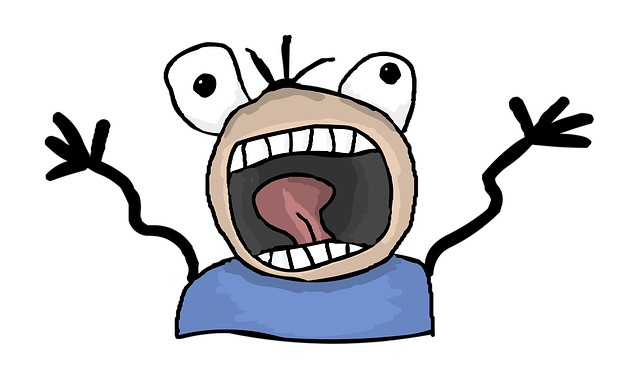
If you do have the skills to handle a stressful situation, but you convince yourself that you don’t, you won’t have a beneficial stress response. Instead, you’ll experience anxiety, panic, paralysis, or other debilitating effects of acute stress. Indeed, research shows that people who doubt their abilities and worry about their performance do much worse under stress.2
Sometimes this occurs in people who have developed what’s known as learned helplessness. If you experience many situations where you are powerless to help others or help yourself, you might internalize this helplessness and apply it to situations in which you do actually have the power to take positive action.3
As Martin Seligman details in his book, Learned Optimism, it is possible to overcome this unrealistic pessimism and lack of agency. Anyone can develop realistic optimism and learn to be proactive.
Let’s say there’s a recurring stressful situation in which you feel powerless. Here’s a technique that can help you have a better response:
- Take an inventory of all the personal strengths, knowledge, skills, tools, resources, and the other people that you have access to that could help in this situation. Write it all down.
- Then reflect on your actions. Are you using what you have? How could you use those resources more often or more effectively? Commit to specific actions, and write them down.
- And then think about what’s missing and make a second list. What resources would be helpful to have that you don’t have? What skills are you lacking?
- Whatever’s on your second list, make a plan to go get those things or team up with a partner who has them.
If you feel stumped by these questions, that means you need to ask someone else for input. Your peers, friends, and family can help you out. They might see options you’re blind to or remind you of things you’ve forgotten. By getting clear about what you have and what you need, the path forward becomes more obvious.
In addition, you can combat inaccurate negative thinking by utilizing achievement reminders and journaling about things you’re proud of yourself for doing.
Self-Efficacy
The key to having a better stress response is not false confidence but true confidence based on self-efficacy. Stress will work in your favor to the degree that you are ready for the challenge.
Self-efficacy is a person’s belief in their own ability to handle challenges. It is a realistic assessment based on evidence from their own experiences. You cannot have self-efficacy unless you have acquired the necessary knowledge and practiced the necessary skills to meet the challenge at hand.

And self-efficacy is situation-specific. A carpenter is confident in his ability to build. A doctor is confident in her ability to heal. A teacher is confident in their ability to impart knowledge. So the smart approach is to develop the specific skills you’ll need for the specific types of stressful situations you’re likely to encounter.
Increasing self-efficacy is the most under-utilized stress-management technique. Having confidence, and the skills to back up that confidence, allows you to use stress as fuel.
Up Your Game
“To build confidence, build competence. Nothing creates and undergirds a confident disposition like knowing you’re prepared for the challenge.” –Tom Morris4
In other words, your primary stress-management strategy should be relentless learning.
For work, increase your skills and knowledge by studying adjacent domains, taking professional trainings, and practicing techniques you’ve gotten rusty at. At home, upping your game could mean learning how to do repairs or manage your finances.
And upping your game isn’t limited to technical skills. You might benefit from learning skills related to public speaking, creativity, or executive function.
It could be that you would benefit the most from interpersonal skills: teaching others, conflict-resolution, teamwork, or listening well.

And it might be that you need to cultivate stronger intrapersonal skills: self-awareness, self-reflection, mental flexibility, emotional regulation, and mindfulness.
Falling short in any of these areas can easily be a source of debilitating stress, but anyone can improve their skills through study and practice.
Stress and the Inverted U-Curve
Now let’s complicate things a little further. It’s not simply the case that your response to acute stress is either helpful or unhelpful. And it’s not simply the case that your response depends exclusively on your level of self-efficacy. The amount of stress also matters.
Check out this graph:
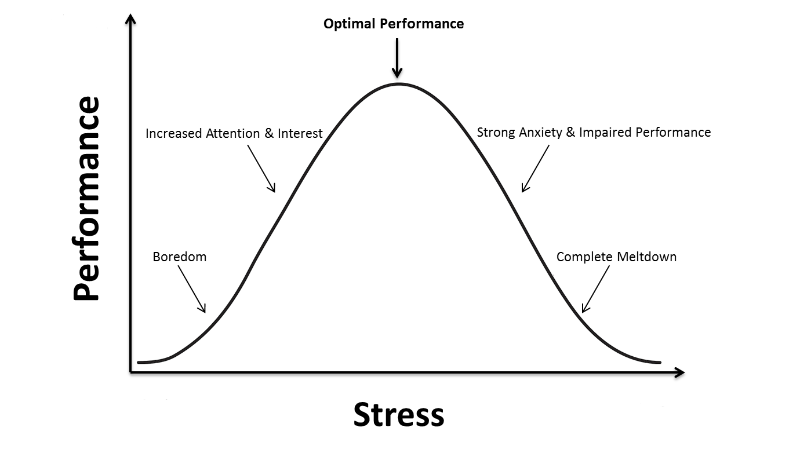
This curve, reflective of the Yerkes-Dodson law,5 shows that the relationship between stress and performance takes the shape of an inverted U. With very little stress, we’re bored, so we don’t perform at our best. As stress increases, performance improves because we’re stimulated. But after a certain point, the stress is too much, and our performance falls off.
One obvious takeaway here is that we shouldn’t try to eliminate stress, but aim for an optimal level of stress. If you’re bored, you need a more challenging task. And if you’re on the downslope of this curve, you’ll benefit from taking steps to ratchet your stress back to a better level.
And that reducing stress piece is what’s normally discussed in stress-management classes and books:
- You should take deep breaths because your brain likes oxygen and because calm behavior supports calmer emotions.
- You should adopt confident body language because it makes you feel more confident.6
- You should reframe the physical feelings of anxiety and nervousness as “excitement.”1
- You should avoid multitasking because it makes you feel busier than you really are.
- And if you can, put your phone in another room when you’re working so you don’t get interrupted.
That’s all good advice, but most people have heard those ideas before.
So what I want to drive home instead is that the shape of this curve changes from person to person and from situation to situation, based on self-efficacy. And, for everyone, it is possible to shift the whole curve up and to the right by acquiring greater skills:
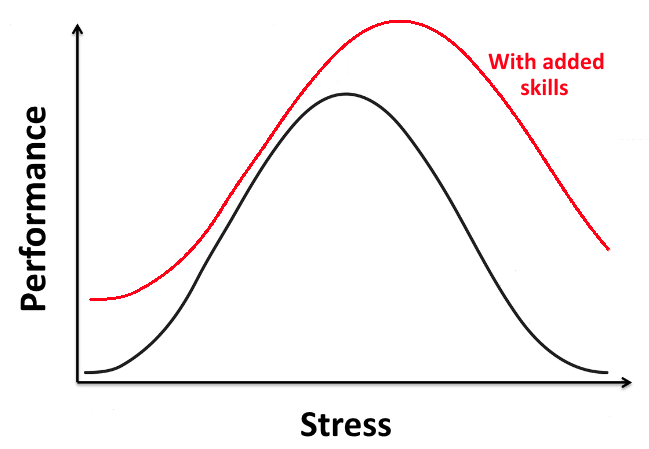
If you’re better prepared to handle life’s challenges, you’ll perform better and be able to deal with greater amounts of stress without cracking under the pressure.
Part 2: Chronic Stress
So far, we’ve been talking about acute stress – stress that happens once and is unique to a particular situation. Chronic stress refers to the accumulated effects of many episodes of acute stress.
And you’ve probably heard about how bad chronic stress is for your health and mental health. High levels of chronic stress seem to be associated with all sorts of illnesses, such as heart disease and cancer, as well as anxiety and depression.7
While it’s easy to find articles discussing the deadly effects of stress, the jury is actually still out on that, and the academic community is currently debating and researching whether or not chronic stress is actually bad for you. One of the scientists casting doubt on the consensus that chronic stress is bad for you is Stanford’s Kelly McGonigal. Her excellent book, The Upside of Stress, looks at the latest research on stress and details how to get better at stress.
You’re not a rat.
One of the things McGonigal points out really surprised me. Much of the research showing that chronic stress is unhealthy was not done on humans; it was done on rats. And they didn’t put the rats through the proverbial “rat race” of driving through traffic and working a stressful 9-5 job. They tortured the rats, creating conditions that look more like prison or child abuse than typical stress.1
Side note: Extreme stressors, such as war, abuse, and sexual violence, are indeed harmful to humans. However, for reasons we’re still studying, some people come out of these experiences stronger rather than weaker. While many people do develop post-traumatic stress disorder (PTSD) from traumatic experiences, other people experience post-traumatic growth.8 Humans, at least some of the time, are more resilient than rats.

So, when people claim that we know that stress is bad for you, what we actually know is that torture is bad for rats. But this is not to fault the researchers; studying humans is very challenging. Humans live long lives, so longitudinal research on the effects of chronic stress is difficult, slow, and expensive. Furthermore, you can’t induce chronic stress in humans for a whole host of practical and ethical reasons. (It could easily be argued that torturing rats for research is unethical as well.)
Instead, researchers have to rely on self-reporting. They can ask people about their stress levels over time, and then they can correlate those responses with health data. Self-reporting is problematic, but this is the best we can do for chronic stress. And what does that sort of data have to say about chronic stress?
It Depends.
One of the things McGonigal is famous for is bringing to popular attention is that chronic stress appears to only be bad for you if you believe that it’s bad for you.
In the 1990s, researchers surveyed thousands of people about their attitudes toward stress and how much stress they had in their lives. And then, over the next decade, tracked their mortality. People with high amounts of stress in their lives were more likely to die, but only if they reported believing that stress was bad for them. People who reported believing that stress was not harmful didn’t seem to be harmed by it, even if they had a lot of stress in their lives.1
Because longitudinal research only shows a correlation between better health outcomes and seeing stress as benign, psychologists have tried various interventions to change people’s minds about stress. When people are taught to see stress as helpful rather than harmful and given a stressful task, they not only perform better on that task, but also show an increased production of hormones that help with physical and mental recovery.1
So there appears to be an element of self-fulfilling prophecy with regards to whether or not stress is harmful. In other words, the way you interpret reality can actually change how stress affects your body.
This may seem strange, but the mind and the body are not separate entities. There is a constant back-and-forth communication through a variety of channels, most notably the vagus nerves, which connect emotional regulation centers of the brain to the cardiovascular system.9 This, along with self-perception, is why relaxed breathing relaxes the mind and why anxious thoughts produce tension in the body.
Stress as Exercise for the Mind
Another perspective, which I learned from Tal Ben-Shahar’s Harvard course on positive psychology, is that stress is like exercise. As with exercise, some stress is good for you – it makes you stronger – but too much without sufficient rest and recovery leads to problems.10
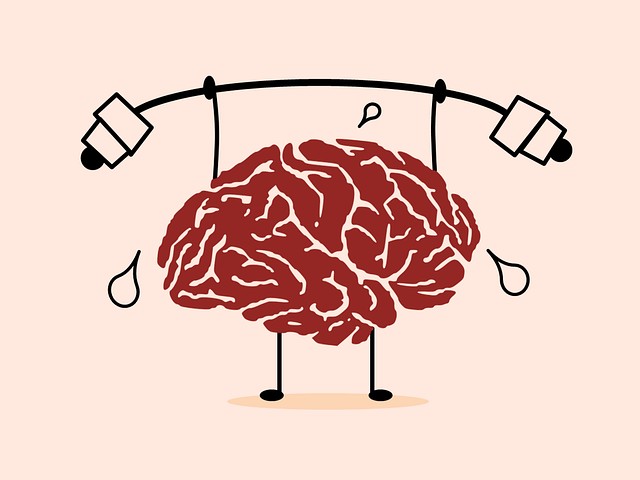
Some stress is probably necessary to keep your brain muscles sharp. Stressful situations challenge the mind, and since struggle makes you stronger, they leave you more capable of handling future stress. But nonstop stress leads to psychological injuries ranging from meltdowns and exhaustion to anxiety and depression.10 So when we say that chronic stress leads to burnout and unhappiness, we’re actually talking about chronic stress without adequate rest and recovery.
So the take-home lesson from this perspective is very different from the standard advice to just reduce stress. Instead, the goal should be to increase rest and recovery. And this is much more actionable.
Increasing Rest and Recovery
Of course, this means getting enough quality sleep as often as possible, taking breaks during the day, taking weekends off, and taking vacations from time to time. But it’s also more than that.
There are many small opportunities for recovery that most people don’t see. And many of us squander the opportunities we are aware of. So I want to help you get clear on what real recovery looks like and help you find a lot more of it.
In the modern world, most people think that checking social media, watching TV, playing video games, or texting friends is a “break.” While those things aren’t work, they’re also not rest. They’re more stimulation. A real break isn’t just a break from work – it’s a break from mental stimulation in general.
A real break gives your mind a chance to truly rest. This could mean taking a walk, taking a nap, spending time in nature, listening to chill music while stretching, or just sitting and doing nothing.
Lately, I’ve been using “napitations”: lying down for 30 minutes, and doing breathing meditation until I drift off to sleep. Basically, I’m treating myself like a toddler and forcing myself to lie down for a while in the afternoon, lest I throw a tantrum later 🙂

There are lots of things we do for recreation that are fun – television, video games, drinking – that aren’t necessarily “re-creation.” True re-creation is fun that leaves you psychologically recharged and physically healthier.11 In another great Kelly McGonigal book, The Willpower Instinct, she writes:
“According to the American Psychological Association, the most effective stress-relief strategies are exercising or playing sports, praying or attending a religious service, reading, listening to music, spending time with friends or family, getting a massage, going outside for a walk, meditating or doing yoga, and spending time with a creative hobby. (The least effective strategies are gambling, shopping, smoking, drinking, eating, playing video games, surfing the Internet, and watching TV or movies for more than two hours.)”12
And then she explains why we choose the least effective stress-management techniques more often than the ones that actually work: our inability to predict our future emotions:
“Rather than releasing dopamine and relying on the promise of reward, the real stress relievers boost mood-enhancing brain chemicals like serotonin and GABA, as well as the feelgood hormone oxytocin. They also help shut down the brain’s stress response, reduce stress hormones in the body, and induce the healing relaxation response. Because they aren’t exciting like the dopamine releasers, we tend to underestimate how good they will make us feel. And so we forget about these strategies not because they don’t work, but because when we’re stressed, our brains persistently mis-predict what will make us happy. This means that we’ll often talk ourselves out of doing the very thing that will actually make us feel better.”12
This makes a great case for creating recovery routines. If our recovery practices are habitual, then we don’t have to use willpower to choose them. In other words, make recovery a habit.
Now, I’ve painted restorative recreation as a black-and-white thing, but there’s really a spectrum of restful activities. For example, not all television is created equal. It’s probably the case that watching comedies is more relaxing than watching crime shows.
And what works for you may depend on your personality type. If you’re an extravert whose stressful day mostly involves working alone, you’ll probably need social time to recover. If you’re an introvert whose daily stress mostly involves dealing with other people, you’ll probably need time alone. Everyone’s different, so figure out what works best for you and make time for that.
Prioritize Breaks
Here’s another gem from that Harvard positive psychology class:
“Rest before you get tired.” –Tal Ben-Shahar10
This has two meanings. The first is to take breaks before becoming exhausted. Know that tired is coming. Make time for rest and recovery prior to losing your cool.
This is akin to drinking water before becoming dehydrated or having a snack before getting hangry.
As simple as it sounds, it’s actually hard to remember to take breaks. We’re often caught off guard. We push and push and push, thinking we’re just fine, and then suddenly we hit the wall, fall apart in the face of a minor challenge, or blow up over something small.
To make sure we don’t reach this point, we need to create routines of rest and recovery by scheduling breaks and actually taking them. And we have to do this even when we don’t feel like we need to. Again, rest before you get tired.
“The real enemy of high performance is not stress . . . the problem is the absence of disciplined, intermittent recovery.” –Jim Loehr and Tony Schwartz13
The Pomodoro Method is a good tool for this. You simply set a timer for however long you’d like to spend doing focused work (maybe 60 or 90 minutes), and when the timer goes off, you take a short break. And then you do it again. After a few Pomodoros, take a longer break.
But Chris, I’m too busy. I don’t have time to take breaks!
I totally get it. The idea of taking time out from your day to do nothing might seem unrealistic or counterproductive. I have two responses to that:
- It’s not unrealistic to take breaks because you don’t have to take a very long break to experience the benefits of rest and recovery. Even a few moments can work wonders, as we’ll see shortly.
- It’s not counterproductive because taking a break makes you better at your job for the rest of the day. Breaks increase your ability to focus, retain information, resist procrastination, and engage in critical thinking.14 You’ll probably also get along better with your coworkers. Sometimes, the best thing you can do for your productivity is to stop working for a bit.
And this is especially true for creative work. Insights often occur when we’re not working on the problem we’re trying to solve because breaks allow the brain to slip into a mental state in which we’re better at putting together the puzzle pieces that we’ve acquired during focused work.14 Breaks are not frivolous luxuries. They are essential for quality work.
Furthermore, you’re not too busy. You only believe you’re too busy. And the only way to shift that belief is to take a break. When you actually take some time out of your busy day to rest, you prove to yourself that do, in fact, have time.
Microbreaks Work
As I said, you don’t have to take a very long break to experience real recovery. For example, you could put on headphones and listen to one song. Or you could get up and take a walk around the block. You don’t have 15 minutes to spare? How about five. Don’t have five? How about one.
There are many little moments we can use as microbreaks. A microbreak is a tiny pause that you take to recharge and refocus. Here are some examples:
- Getting up from your desk, walking over to the window, and staring out into the world for a few moments.
- Using the last 30 seconds on the microwave to close your eyes and take a deep breath.
- Sitting in your car doing nothing for a minute after you arrive somewhere early.
- Taking deep breaths while stuck at red lights.
My favorite version of a microbreak is a miniature meditation that can do at your desk. You’ll remember it better if you have a chance to feel it, so please do one right now. It’s really simple and takes less than a minute. Sit up straight, fold your hands in your lap, close your eyes, and take three deep breaths, focusing on inhaling fully and exhaling completely.
Aaaahhh.
My favorite time for a microbreak is in between tasks because it helps me fully detach from the previous task and ready myself for the next one.
I also love microbreaks as an example of the principle that everything counts. A little bit of rest is better than no rest at all. If you don’t have time for a full break, at least give yourself a microbreak.

Use Your Downtime As Downtime
In the olden days, before smartphones, people had a lot more downtime. By that I mean they were bored a lot more often. Stuck in line at the store? Bored. Friend late to lunch? Bored. Waiting for the bus? Bored. Partner slow to get ready to leave? Bored.
These days, most of us fill all of our downtime with phone-time: getting caught up on emails and texts, reading the news, scrolling social media. And I get it. It seems like the smart, efficient thing to do. But those moments of nothing people used to have are actually essential for mental health and creativity. They allow the brain to rest, and they allow the mind to process. We need to reclaim them.
So, if you want to make the most of your downtime, actually use it as downtime. Spend more time in airplane mode and embrace boredom. It’s good for you.
Pre-Resting
The second meaning of “rest before you get tired” is to pre-rest.
Pre-resting means engaging in recovery activities before you experience stress. One classic example of pre-resting is going to bed early because you know you have a tough day of work tomorrow. But I like to take this to a more serious, habitual level, so I start every day with recovery practices.
Here are some of the key features of the morning routine of self-care that I use to fuel up for the day:
- Fresh air
- Exercise
- Wisdom
- Loving-kindness meditation
- Breathing meditation
I don’t exercise to get a six-pack; I exercise because it sets my brain up to have a better day. While exercise isn’t physical rest, it is psychological rest, so long as you’re not, like, watching the news while you’re on the treadmill. And research has made it crystal clear that physical exercise is one of the best stress-management tools available.15
And I don’t meditate or consume wisdom in order to become enlightened. I do those things because they facilitate better thinking, which, in turn, makes me better able to handle stress.
My morning routine stands in stark contrast to some of the worst things you can do to start your day: checking email, social media, and the news. First thing in the morning, your brain is not ready for these things! Give it a chance to wake up before you flood it with stressful stimuli.
“Rest before you get tired” is a strategy that embraces sustainable productivity for the long-haul rather than focusing on maximizing productivity today. I could get more done today if I didn’t spend the first hour of my day practicing self-care, but I will get more done in the long run if I take good care of myself every day. Like you, I have a mission in life that is bigger than today’s to-do list.
Altruism Heals
It has also been shown that generosity and kindness tend to protect people from the negative effects of chronic stress.1 This actually makes sense in light of the feedback loop between thoughts, emotions, and actions.
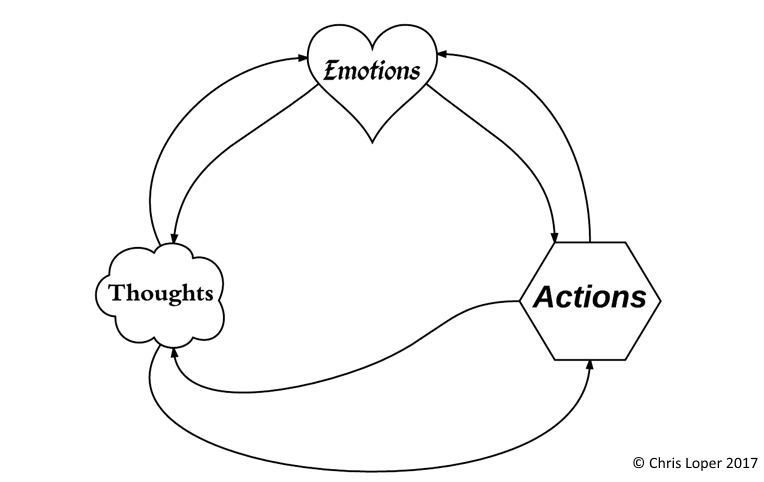
If you’re feeling the effects of chronic stress, you’re probably feeling scarcity. Scarcity of time. Scarcity of money. Scarcity of energy. And feelings of scarcity can actually create more stress and make you feel threatened. But if you use your time and resources to help other people, you’ll effectively be proving to yourself that you are not in a position of scarcity. A mindset of abundance, cultivated through generous actions, is an antidote to the potential toxicity of chronic stress.
For the same reason, gratitude journaling helps reduce feelings of stress and should help you recover from a stressful day.16
Find the Meaning in Your Stress
“Stress is what arises when something we care about is at stake. … You don’t stress out about things you don’t care about. And you can’t live a meaningful life without experiencing some stress.” –Kelly McGonigal, Ph.D.1
Meaningful, important work usually comes with stress. But that’s not necessarily a bad thing. And it’s not a good reason to avoid doing things that matter or pursuing audacious goals.
And if you don’t see your work as meaningful, but instead see it as merely stressful, then you have two options: 1) Find the meaning in your work; or 2) Find new work.
Here are some examples of the first option:
- School and hospital janitors are at the bottom of the social hierarchy at their place of work, but many – quite rightly – see their labor as essential to education and healthcare.
- When I worked in restaurants as a server, I viewed my job as an opportunity to spread joy and make people feel welcome.
- Or maybe you’re an office administrator or computer programmer at a huge corporation. It’s easy to feel unimportant and disconnected from any sense of mission. But your work does play a role in keeping your coworkers employed, your customers happy, and the economy as a whole moving forward.
- (These are all great examples of wanting to do what you have to do.)
Now, perhaps you feel that the second option – finding new work – is the right move. There are plenty of jobs to choose from where your work can make a positive difference in the world. And if the career you want is currently out of reach, work your way to the center of the Ikigai diagram.

Needless Stress
Still, there is plenty of stress that people take on which has no meaning. Following reality-TV drama or a suspenseful Netflix series can be a source of fun, but it can also be a source of needless stress that adds no meaning to your life and adds no value to the world. If there’s any kind of stress we should be reducing, it’s this.
We should also be careful about how we engage with the news because “Stress caused by the news, as opposed to stress caused by your life, is unique in its ability to trigger a sense of hopelessness.”1 It’s important to stay informed, but many of us are checking the news far more than we need to. And unless we’re taking positive action to make the world a better place, the news is likely to make us feel powerless in face of threats, scandals, and traumas, triggering an unhelpful stress response.
Traffic is another example. While you can’t change whether or not there is traffic on the road, you can change whether or not it’s stressful. How? Leave earlier.
Think about how much more stressful traffic is when you’re running late. If you leave the house with exactly enough time to get where you’re going on time, a string of red lights is very upsetting. But if you’ve left 10 minutes early, who cares? So leave early, and if things go wrong, you’ll still be on time, and your drive will be a lot more pleasant. (This, by the way, is a great example of the principle of two errors.)
Conclusion
Acute stress and chronic stress are always intertwined. Getting better at acute stress will reduce the exhaustion of chronic stress. And practicing real recovery will ensure that you have more energy for bouts of acute stress.
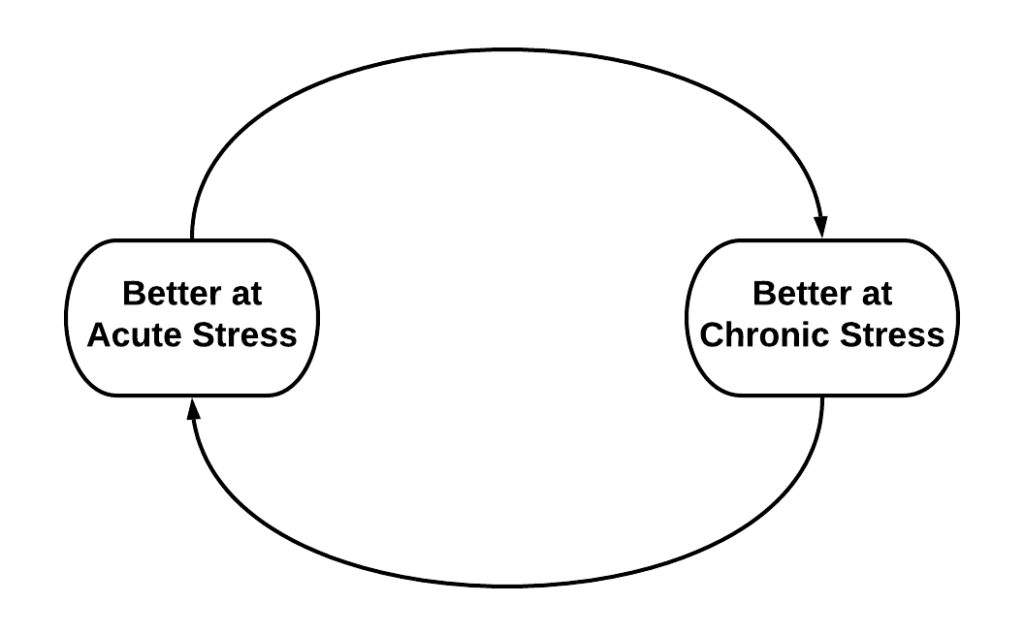
If you see a stressful situation as a threat, you’ll experience a damaging, probably unhelpful, fight-or-flight response. But if you see the same stressful situation as a challenge, you’ll experience a stress response that “gives you energy and helps you perform under pressure. Your heart rate still rises, your adrenaline spikes, your muscles and brain get more fuel, and the feel-good chemicals surge. But it differs from a fight-or-flight response in a few important ways: You feel focused but not fearful. You also release a different ratio of stress hormones, … which helps you recover and learn from stress.”1
When you’re facing acute stress, remember your resources: your strengths, your skills, other people. To prepare for future stressful situations, determine what abilities and tools you’ll need – and go get them.
And then, when the stressful situation has passed, give yourself some time to recover, even if it’s just a moment. Pace yourself. It’s better to take a break than push yourself to the breaking point.
Stress isn’t necessarily bad. With the right approach, it’s something you can use to your advantage. Instead of just managing stress, you can master it.
1 McGonigal, Kelly, Ph.D. The Upside of Stress: Why Stress Is Good for You, and How to Get Good at It. Avery, 2015.
2 Robertson, Ian. The Stress Test: How Pressure Can Make You Stronger and Sharper. Bloomsbury Paperbacks, 2018.
3 Seligman, Martin. Learned Optimism: How to Change Your Mind and Your Life. Vintage; Reprint edition, 2006.
4 Morris, Tom. The Art of Achievement: Mastering The 7 Cs of Success in Business and Life. Andrews McNeel Publishing, LLC, 2002.
5 https://en.wikipedia.org/wiki/Yerkes%E2%80%93Dodson_law
6 Cuddy, Amy. “How Your Body Language Shapes Who You Are.” TED Global 2012.
7 Mayo Clinic Staff. “Chronic stress puts your health at risk.”
8 Joseph, Stephen, Ph.D. What Doesn’t Kill Us: The New Psychology of Posttraumatic Growth. Basic Books, 2011.
9 Brown, Richard P., and Patricia L. Gerbarg. The Healing Power of the Breath: Simple Techniques to Reduce Stress and Anxiety, Enhance Concentration, and Balance Your Emotions. Shambhala, 2012.
10 Ben-Shahar, Tal. Psychology 1504: Positive Psychology. Harvard Open Course, 2009.
11 Covey, Stephen R. The 7 Habits of Highly Effective People: Powerful Lessons in Personal Change. Fireside, 1990.
12 McGonigal, Kelly, Ph.D. The Willpower Instinct: How Self-Control Works, Why It Matters, and What You Can Do to Get More of It. Avery, 2011.
13 Loehr, Jim, and Tony Schwartz. The Power of Full Engagement: Managing Energy, Not Time, Is the Key to High Performance and Personal Renewal. Free Press, 2003.
14 Oakley, Barbara. A Mind for Numbers: How to Excel at Math and Science (Even If You Flunked Algebra). Penguin, 2014.
15 Ratey, John J., M.D. Spark: The Revolutionary New Science of Exercise and the Brain. Little, Brown & Company, 2008.
16 Emmons, Robert. Thanks!: How Practicing Gratitude Can Make You Happier. Houghton Mifflin Harcourt, 2007.
